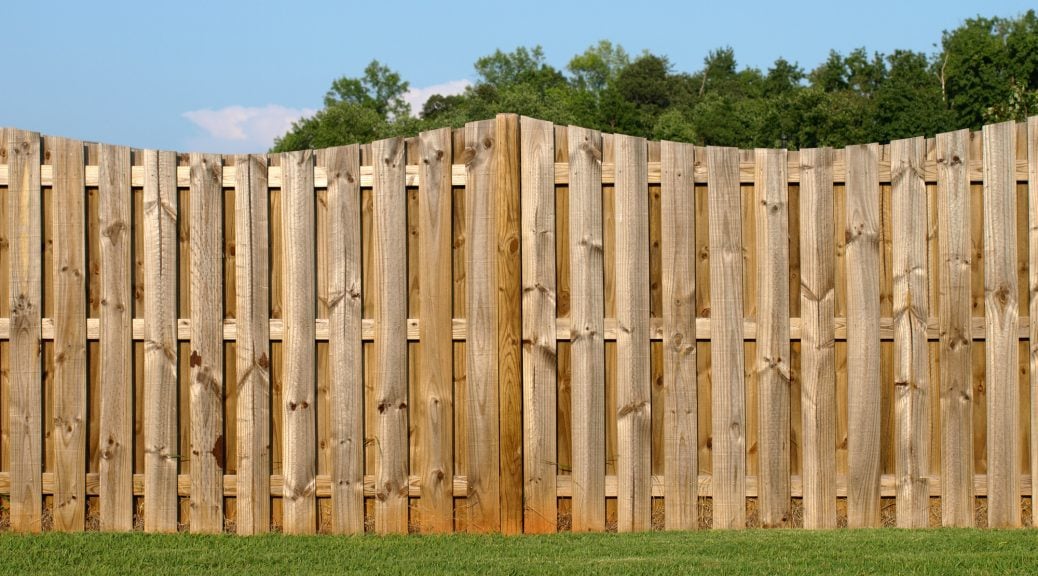America has always been obsessed with wooden fences.
From the pine fences that defended our land in colonial times to the rise of decorative picket fences, we’ve always loved staking out our property with the right fence.
Once upon a time, the choice of fencing materials would have been simple, as lumber options were limited to the trees in your immediate area.
Today, however, there are so many types of wood on the market that it can be hard to decide the best wood for your fence. Balancing appearance with your local climate, and your budget with wood quality, can be a challenge.
Let’s take a look at choosing the right wood, and the types of wood you’ll want to consider.
Things to Consider When Choosing the Best Wood for Your Fence
Though you’ll find a range of wood types at your local home improvement store, some are more popular than others for fencing. The variety you choose, however, depends on several factors.
Is the wood insect-resistant?
When you’re building an outdoor fence, insect infestation is always a concern. If wood isn’t pressure-treated or naturally resistant to bugs, nuisances like termites could be eating away at your fence by the time you finish it.
What’s your budget?
Even for projects where you don’t need the most beautiful or durable option, it’s crucial to consider the quality of the wood. The best wood for fences requires fewer repairs in the long run, and you won’t need to replace it as quickly as an inferior option.
Wood comes in the common range of standard, better, or quality wood—think of this as “good, better, and best”—but these sometimes have imperfections and knots that affect the final appearance of your fence. Instead, you can opt for the more expensive options: construction, select, premium, or clear grade. The last two are the most expensive, but they also tend to last longer and present a higher quality final product.
What will the fence be exposed to?
Consider the weather where you live. Is it a rainy area, where the wood will often be exposed to moisture? Is the climate dry and sunny, meaning the fence may be bleached by the sun? The goal here is to choose the best wood for your climate, and to protect it against the elements most likely to affect it.
Popular Types of Wood for Fencing
Pressure-treated wood
As the least expensive type of wood, this popular option comes from pine or fir. It’s treated to defend against rot and insect infestation, but the chemicals used in the treatment are toxic to humans and animals. While the risk of health issues is mild, you should still be careful when working with it.
Pine
A popular choice for a lower budget, pine is a soft wood, making it easy to work with. It resists shrinkage and warping from moisture, making it a good pick for wetter climates. Pine’s lifespan ranges from 5-12 years.
Cedar
This popular choice isn’t maintenance-intensive, as its acids and oils make it naturally resistant to insects. It carries a pleasing scent and often has a beautiful tint of red in its grain. Cedar typically lasts for 15-30 years.
Cypress
Tan to red in color, cypress is a durable wood that works well in wetter climates, though it can warp if it’s improperly dried. Like cedar, it’s naturally resistant to insects and carries a pleasing scent.
Redwood
Also naturally resistant to insects, this option is a little pricier than the wood types above. However, redwood is both durable and beautiful, and high-quality lumber comes with a stunning deep red color. A sturdy redwood fence will last around 25-30 years.
IPE
It should come as no surprise we consider it the best all-around wood, period.
This very dense hardwood has a tight grain, making it naturally resistant to rot, insects, scratches, and splinters. IPE fares well in all climates, and its outdoor lifespan is unmatched at 75+ years. With a natural and luxurious appearance that comes with tints of amber and red, it’s a great option for beautiful, durable, and long-lasting fences.
Preserving Your Wood Fence
Once you’ve chosen a wood fence type that you feel good about, there are a few things you should do to preserve its beautiful color and extend its lifespan for as long as possible.
First, make sure that the fence posts are correctly installed. The goal here is to limit wood-to-soil exposure, as the last thing you want is for your new wooden fence to fail due to moisture or rot.
Second, if you’re choosing any wood of lower quality than IPE (which doesn’t require any treatment), it’s crucial to weatherproof the fence. This protects your finished fence from extreme temperatures and precipitation. The best weatherproofing solutions will also have UV protection, which will help prevent the sun from bleaching the natural color of the wood so quickly.
Weatherproofing should be reapplied on an annual basis for woods that need it, so make sure to put the task on your maintenance checklist.
Building the Right Fence
In the end, the best wood for fence building is the one that matches the aesthetic you’ve envisioned for the project and one you feel comfortable building with. Find lumber of the right quality, and you won’t have to worry about fixing or rebuilding your fence for years to come.
If you have questions about the right lumber for your project, or if you’re set on fencing with IPE, don’t hesitate to get in touch. We’re happy to help you find the right material for your needs!

